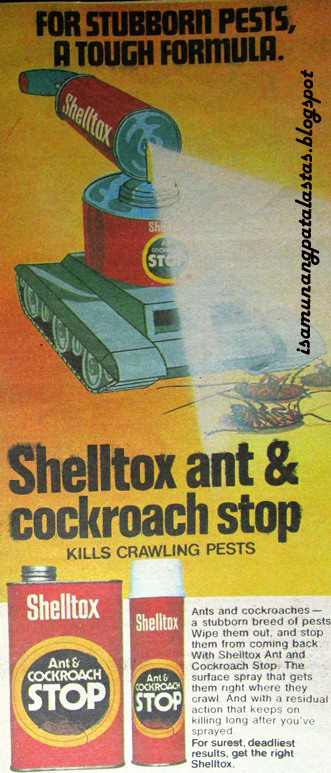Mosquitoes and rodents and roaches, oh my!
Ever since the dawn of civilization, mankind has been
plagued with pests of the most annoying biting-stinging-crawling-wiggling-disease
carrying variety, infesting every nook and cranny of homes and offices. And men
have found ways to deal with them.
The first known pesticide was elemental sulfur dusting
used in ancient Sumer about 4,500 years ago in Mesopotamia. It was only in 1946
that the first modern bug repellant was invented by Samuel Gertler of the US
Department of Agriculture, receiving a
patent for using DEET in the form of a cream, lotion, or powder.
The aerosol can had been invented in 1931 and was largely
undeveloped until American Lyle Goodhue devised a practical version that could
be used to propel insecticide. In 1945, Goodhue, joined Airosol, Inc.. With him
as director of research Airosol became a
leading packager of aerosol spray consumer products after the war—including insect
spray—which gave us a major advantage in our war against pests and bugs.
Here are some anti-insect and
pest products that have protected us and our homes through the years:
RAT-EX WITH WARFARIN. A powerful rodenticide manufactured by Estraco Pharmaceutical Laboratories, an exclusively distributed by La Estrella del Norte. 1955.
DORA RAT KILLER, One of the most popular rodent killer brand, that came in granules forms. Manufactured by Fumakilla Lab, a Japanese company. 1978.
MOSQUITO KILLER
LION BRAND MOSQUITO KILLER, an early katol-type coil with fumes that can kill mosquitos. 1957.
VAPE ELECTRIC MOSQUITO DESTROYER, a new,modern way to keep away mosuitos. Made by Fumakilla Lab. 1966.
OFF INSECT REPELLENT. your invisible mosquito net. Apply or spray this on your skin to ward off pesky mosquitos. Made by S./C.Johnson. 1975.
SHELLTOX BLUE. Kills all troublesome breed of insects, including mosquitos. From the Shell Chemical Co. (Phil.) Inc. 1979.
ROACH AND FLY KILLER
KAN-KILL--kills filthy germ carriers that can cause malaria, cholera, dysentery, typhoid fever and diarrhea. Made with Strobane, the world's deadliest insect killer. 1961.
NUVAN AEROSOL SPRAY. "Pamatay n, pleasant-smelling pa!", Does not contain DDT and fluorocatbon claimed as harmful to the ozone layer. 1978.




























